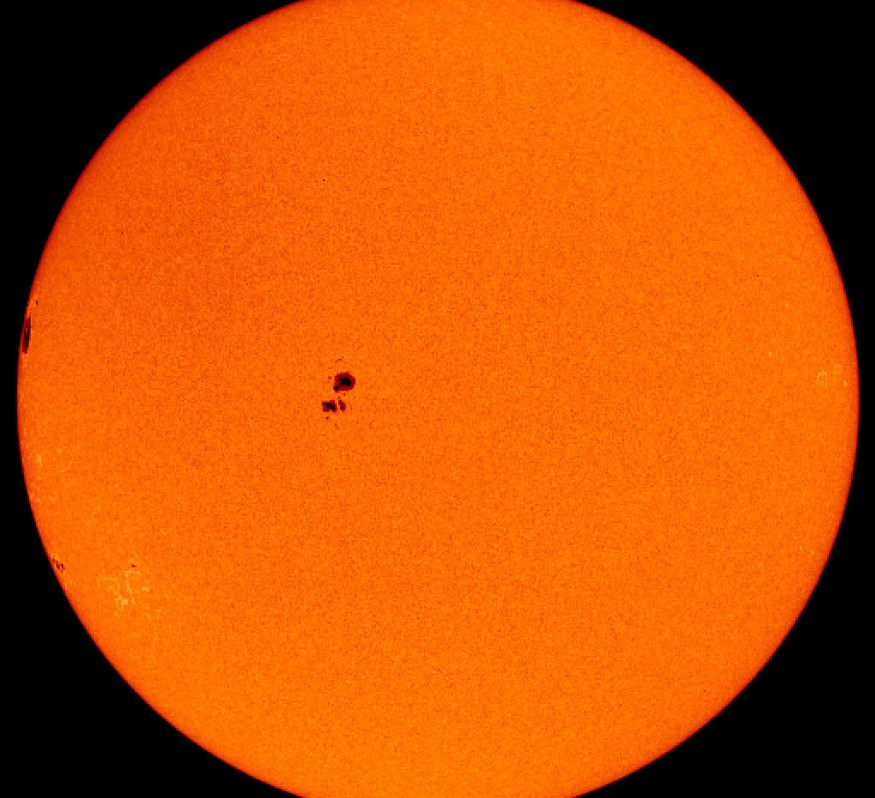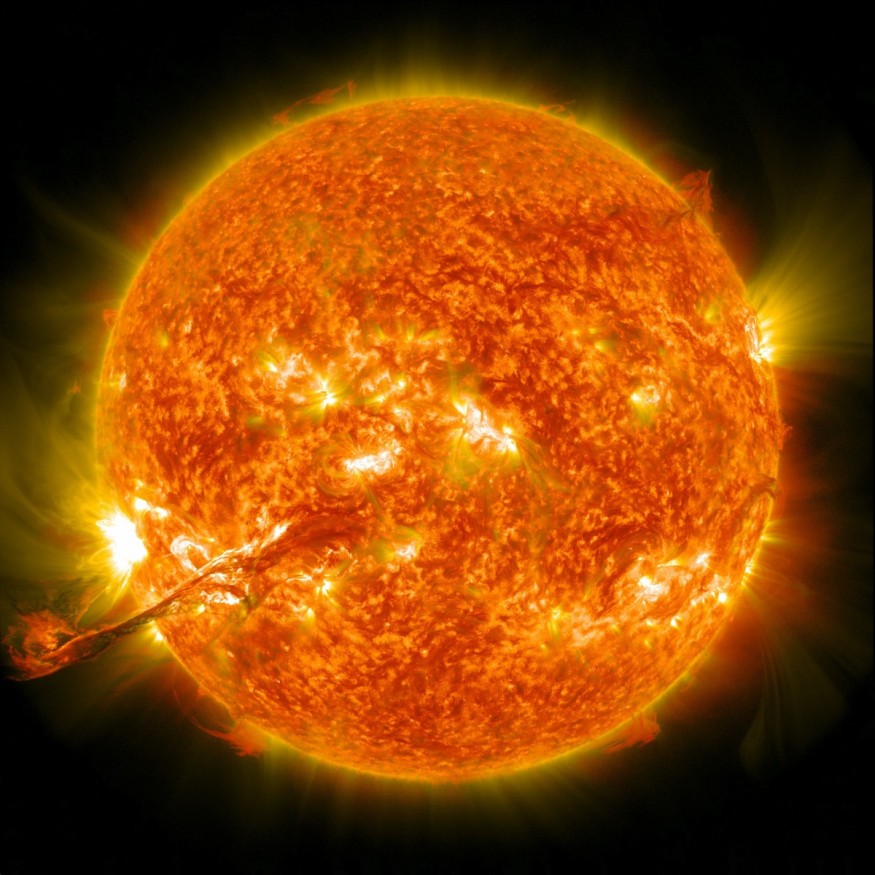In just 24 hours, a massive sunspot with an unstable magnetic field quadruples in size.
A rapidly expanding large sunspot on the sun's surface will likely cause a solar flare to target Earth on Monday.
Sunspot AR3098
As the sunspot, known as AR3098, is currently pointing toward Earth, any eruptions that originate from it are likely to affect us.
Since September 11, according to the solar activity news site Spaceweather.com, it has quadrupled in size, as cited by Newsweek.
NASA's Solar Dynamics Observatory (SDO) video demonstrates how AR3098 has expanded quickly and transformed into a collection of big black patches.
What are Sunspots?

Areas of the sun known as sunspots contain strong magnetic fields.
Sunspots seem darker and cooler than their surroundings because of the strong magnetic fields that prevent some heat from the sun's interior from reaching the surface.
CME Release

A lot of energy is released when the magnetic field lines linked to sunspots abruptly change or realign.
Solar flares, and coronal mass ejections (CMEs), which are clouds of plasma and frozen magnetic fields, are possible ways to release this energy.
Current technology, such as power grids, communication and navigation systems, and magnetic fields, can affect these solar outbursts and impact Earth's atmosphere and magnetic field.
Geomagnetic storms are the term used to describe these effects.
Each sunspot can contain numerous zones with various magnetic polarities, either positive or negative; this might affect the likelihood of an eruption from that sunspot.
Active Solar Cycle
As part of its roughly 11-year solar cycle, the sun is becoming more active, and sunspots are becoming more frequent.
In the case of sunspot AR3098, the possibilities of an eruption are quite likely, mainly due to its unstable magnetic field.
A hidden sunspot unleashed an explosion on September 5 that was so powerful that one expert stated it will be researched "for years to come."
Fortunately, they won't necessarily cause trouble.
Solar Flare Intensity
On September 12, there was a 15% possibility of M-class solar flares and a 70% likelihood of a weaker C-class flare, according to the solar activity news website Spaceweatherlive.com and NASA.
M-class solar flares, which range in strength from M1 to M9, are the second-strongest kind of solar flare.
A radio blackout scale that begins with modest M-class flares was developed by the National Oceanic and Atmospheric Administration's (NOAA) Space Weather Prediction Center (SWPC) to depict the impacts of solar flares.
The scale predicts that a mild M-class flare would have only minor impacts on Earth, such as a slight impairment of high-frequency radio communications and a momentary degradation of low-frequency navigation signals.
Intense M-class flares may have only mild side effects, such as a short-lived high-frequency radio blackout and a longer-lasting deterioration of navigational signs.
No Need to Worry
Most individuals on Earth are unlikely to observe either of these occurrences.
To cause significant disturbance, an X-class solar flare would be needed.
Related Article : Expert Warns 'Situation Worse than Covid' if Government Ignores Solar Flare Defense
For more cosmic news, don't forget to follow Nature World News!
© 2025 NatureWorldNews.com All rights reserved. Do not reproduce without permission.





